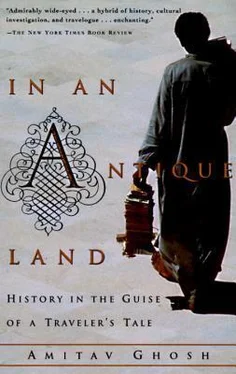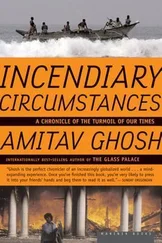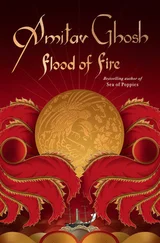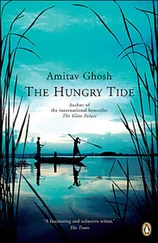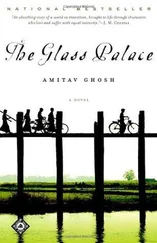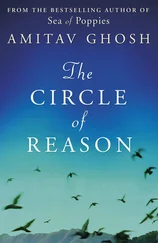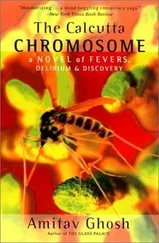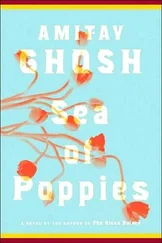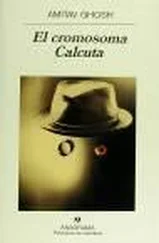Most Sufis would have regarded the Vachanakara saint-poets as pantheistic and blasphemous in their desire to merge themselves in their Lord. Their own conceptions of extinction (fanâ) and subsistence (baqâ) always assumed an utterly transcendent God. Yet they would probably have acknowledged a commonality in the nature of their quest, and they would certainly have perceived a similarity in their use of poetic imagery.
For the Sufis as for the Vachanakaras, the notion of being held by bonds was one of the central metaphors of religious life. They too drew some of their most powerful images from the institution of slavery: metaphors of perfect devotion and love strung together in an intensely charged, often erotic, spiritual imagery. Thus, in Sufi tradition, Sultan Mahmud of Ghazni, the eleventh-century soldier who built an immense empire in Central Asia, was not the fearsome and bloodthirsty conqueror that he is often depicted to be, but rather a symbol of mystical longing, because of the ties that bound him to his soldier-slave, Ayaz. A Sufi parable relates that once when the mythical bird, Huma, the touch of whose shadow was said to confer kingdoms, appeared in the skies above Mahmud’s army, the emperor found himself suddenly alone, abandoned by his most faithful courtiers — all except one, Ayaz. While the others went chasing after Homa’s shadow, Ayaz stepped instead into the shadow of Mahmud, so that his master might know that for him the world contained no better kingdom. In the telling of the Sufis, that perfect act of love works a miraculous spiritual transformation and the world-conquering Mahmud becomes ‘the slave of his slave’.
The imagery of the Vachanakaras and the Sufis would seem to be far distant from Bomma and Ben Yiju, and the workaday relations of a trader and his business agent. But even the most mundane institutions have their life-giving myths and against the setting of that distant backdrop of legend and metaphor, the elements of slavery in the ties that bound an apprentice to a master craftsman, an accountant to a merchant, would have appeared, perhaps, not as demeaning bonds, but rather as links that were in some small way ennobling — human connections, pledges of commitment, in relationships that could just as well have been a matter of a mere exchange of coinage.
Bomma may never have known of the saint-poets of his time and their teachings, but he would certainly have been intimately acquainted with some of that great range of popular traditions and folk beliefs which upturn and invert the categories of Sanskritic Hinduism. Ben Yiju, for his part, as a man of wide education, would probably have read something of the Sufis, and he may well have shared in some of the beliefs and practices that have always formed the hidden and subversive counter-image of the orthodox religions of the Middle East: the exorcism cults, the magical rites, the customs of visiting saints’ graves and suchlike. Amongst the members of his community in Cairo, those ideas and practices formed almost as important a part of daily observance as the orthodox aspects of their religion: a very large number of the documents in the Geniza, for example, consist of magical formulae, and treatises related to esoteric rites.
It was probably those inarticulate counter-beliefs, rather than the formal conversion that Bomma probably had to undergo while in Ben Yiju’s service, that eventually became a small patch of level ground between them: the matrilineally-descended Tulu and the patriarchal Jew who would otherwise seem to stand on different sides of an unbridgeable chasm.
6
WHILE MAKING MY way around Mangalore, I often had Bhutashrines pointed out to me: there seemed to be dozens of them dotted around the city and its outskirts, small, modest structures, perched on columns, gazing serenely over gardens and palm-groves. They were always brightly-painted and well-tended, and often there were flowers and offerings lying upon their thresholds.
As the days passed I became increasingly curious about the religious practices that were enshrined in those structures. But when I began to look for material I discovered that as far as most of the standard authorities were concerned the Bhuta-cult did not count as ‘religion’ at all: it fell far beneath the Himalayan gaze of canonical Hindu practice. Such detailed studies as there were, I found, were mainly carried out by anthropologists and folklorists; it was otherwise often dismissed as mere ‘devil worship’ and superstition.
Then, one day, quite unexpectedly, I was presented with an opportunity to visit a shrine when a taxi I was travelling in stopped beside one, on the outskirts of the city. The driver apologized for the delay and said it would only be a matter of minutes: it was just that he always made it a point to stop there, when he was passing by, to say a quick prayer and make an offering. The shrine was a very famous one, he explained, and visitors were always welcome.
The shrine stood on top of a mound, a small tiled enclosure surrounded by ricefields, with the sand-dunes of the coastline visible in the near distance. The image inside was a very simple one, a white, circular mask with an emblematic face depicted on it in bold black lines: a pair of curling moustaches were its most striking features. On either side of the mask was a sword, propped upright against the wall.
The spot was tended by a Pujari, a large, friendly man with gold rings in his ears, who touched our foreheads with sandalwood and gave us handfuls of prasad. He explained, through the taxi-driver, who translated into Hindi for my benefit, that once every year the Bhuta who dwelt in the shrine emerged to take possession of him. A great festival was held then, and after a long cycle of dances and rituals the spirit was ceremonially restored to its proper place within the shrine.
It was an extraordinary experience, the Pujari said, to feel the Bhuta within him, for the spirit of that shrine was greatly renowned for his powers. Many stories surrounded the shrine, he said, and one of them had become famous throughout the region. Years ago, when Mangalore’s new port was completed, the government’s engineers had started building a road to connect it with the city, some fifteen miles to the south. But soon, to general consternation, it was discovered that if the work were to go ahead as planned, the road would cut straight through the shrine. The people of the area had protested mightily, but the government had ignored them and sent out notices of eviction to all the farmers who owned land in the area. Sure enough, one day, the engineers arrived with their machines to begin the work of demolition. But then there was a miracle: their bulldozers were immobilized soon after they had begun to move; they were frozen to the ground before they could touch the shrine’s walls. Completely confounded, the engineers called in high-ranking government officers, and technicians with yard-long degrees. But there was nothing anyone could do and eventually, admitting defeat, they agreed to divert the road so that it skirted around the shrine.
This was a story everyone knew, said the Pujari, and every year at the time of the festival, people would tell it over and over again.
Later, when we got back into the car, the driver asked me to look through the rear window. I watched the road carefully as we drove away, and from the angle of its curve it did indeed look as though it had made a loop to spare the shrine.
Smiling, the driver said: ‘Have you ever heard of anything like that?’
A recollection suddenly stirred in my mind.
‘Yes,’ I said, ‘I heard a very similar story once. In Egypt.’
He nodded politely, but disbelief was written all over his face.
7
BOMMA WAS NOT to remain long in Aden: he came back carrying the very letter in which Madmun described his drunken revelries to Ben Yiju. Madmun’s complaints, however, do not appear to have excited an excess of wrath in Ben Yiju, and nor did Madmun himself bear a grudge for long — in his later letters he was always careful to include a word of friendly greeting for Bomma. Over the years, as Bomma’s role as business agent grew in importance, Ben Yiju’s friends in Aden came to regard him with increasing respect, and in time Khalaf ibn Ishaq even began to prefix his name with the title of ‘Shaikh’.
Читать дальше
